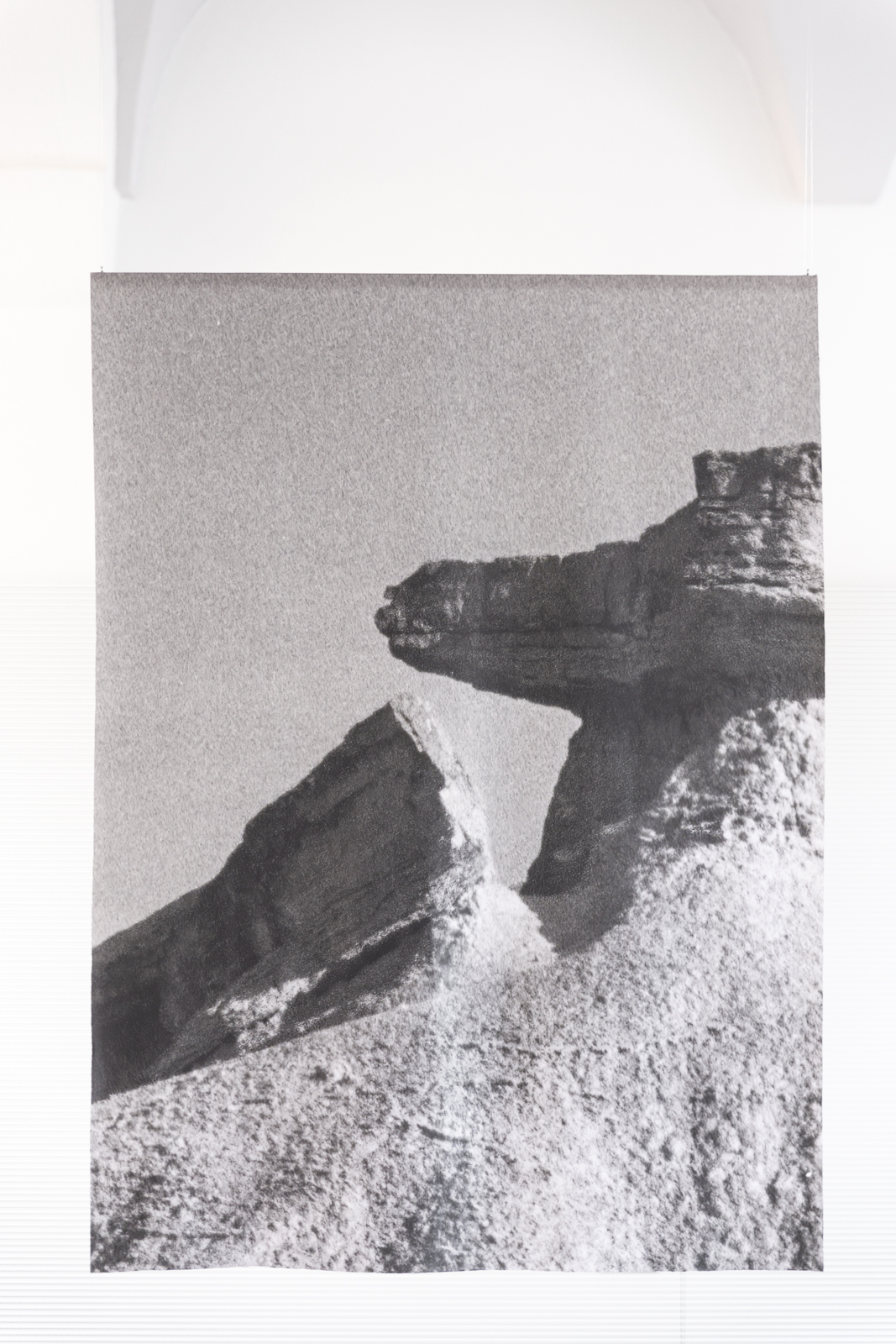Mémoires de mondes vivants
2024
(english title : Memories of alive worlds)
With the support of Wallonie-Bruxelles International
Following text written by Lisi Linster during my residency at Neimenster (LU)︎︎︎
“Images lost in their sequence, cropped, juxtaposed, manipulated, and filtered, the cinematographer and visual artist Juliette Le Monnyer breaks the temporal boundaries of photography.
During her residency at neimënster, the artist furthered her reflections on the human impact on nature. In her visual research project entitled “mémoire de mondes vivants” she investigates the desertification of the Mediterranean basin. Luscious green landscapes give way to different shades of grey and beige. The fertile ground is dried up, creating crackles, holes, and creators. Nature becomes absence, visually defined by negative spaces.
Yet the landscape is never stagnant. Nothing is motionless. It is this aspect of nature, stirred by wind and weather, that the artist is seeking to capture in her works: Nature in transition. Her works thus incite a new way of thinking about the idea of the image, the image as a sequence bound to its temporal context. Thus, rather than creating “film stills” her photographs are fragments that evoke both the past and the future. Like a film strip, they are irrevocably linked to the image before and after.
“Images lost in their sequence, cropped, juxtaposed, manipulated, and filtered, the cinematographer and visual artist Juliette Le Monnyer breaks the temporal boundaries of photography.
During her residency at neimënster, the artist furthered her reflections on the human impact on nature. In her visual research project entitled “mémoire de mondes vivants” she investigates the desertification of the Mediterranean basin. Luscious green landscapes give way to different shades of grey and beige. The fertile ground is dried up, creating crackles, holes, and creators. Nature becomes absence, visually defined by negative spaces.
Yet the landscape is never stagnant. Nothing is motionless. It is this aspect of nature, stirred by wind and weather, that the artist is seeking to capture in her works: Nature in transition. Her works thus incite a new way of thinking about the idea of the image, the image as a sequence bound to its temporal context. Thus, rather than creating “film stills” her photographs are fragments that evoke both the past and the future. Like a film strip, they are irrevocably linked to the image before and after.
Sequence [orange] incapsulates this process: a sequence of three photographs is placed underneath different shades of orange gelatine filters. Though the images are not necessarily in direct sequence to each other the composition of the work forces a narrative onto them. Indeed, through obvious cropping, reframing, and juxtaposing, the artist highlights the image as both a temporal and a contextualised entity. The further manipulation of the image – changing of contrasts and even vectorising the landscape – and superposition of gelatine filters underline the subjective nature of the image. It is not a documentation. The image is inherently subjective. Juliette Le Monnyer explained, that through the use of filters, the landscapes regain their warmth – they get “warmed up”.
Gelatine filters are directly borrowed from stage and film lighting, to present a scenery in a different light. As such, the artist shines a literal “new light” onto these desert landscapes, bathing them in the warm glow of the sun, and making them look welcoming and fertile. But just like a filter on a mobile app, these filters mask the truth, they hide the hostile living conditions and the visible impact global warming has on nature. The work highlights how easily images can be (and are) manipulated by the media and politics, to greenwash reality, blur, filter, and hide it.
Her work at the residency is, thus, the amalgamation of her research in cinema, photography, and visual arts allowing her a specific point of view that transgresses the preconceived norms of the chosen media.”
© Neimenster
Gelatine filters are directly borrowed from stage and film lighting, to present a scenery in a different light. As such, the artist shines a literal “new light” onto these desert landscapes, bathing them in the warm glow of the sun, and making them look welcoming and fertile. But just like a filter on a mobile app, these filters mask the truth, they hide the hostile living conditions and the visible impact global warming has on nature. The work highlights how easily images can be (and are) manipulated by the media and politics, to greenwash reality, blur, filter, and hide it.
Her work at the residency is, thus, the amalgamation of her research in cinema, photography, and visual arts allowing her a specific point of view that transgresses the preconceived norms of the chosen media.”
© Neimenster







